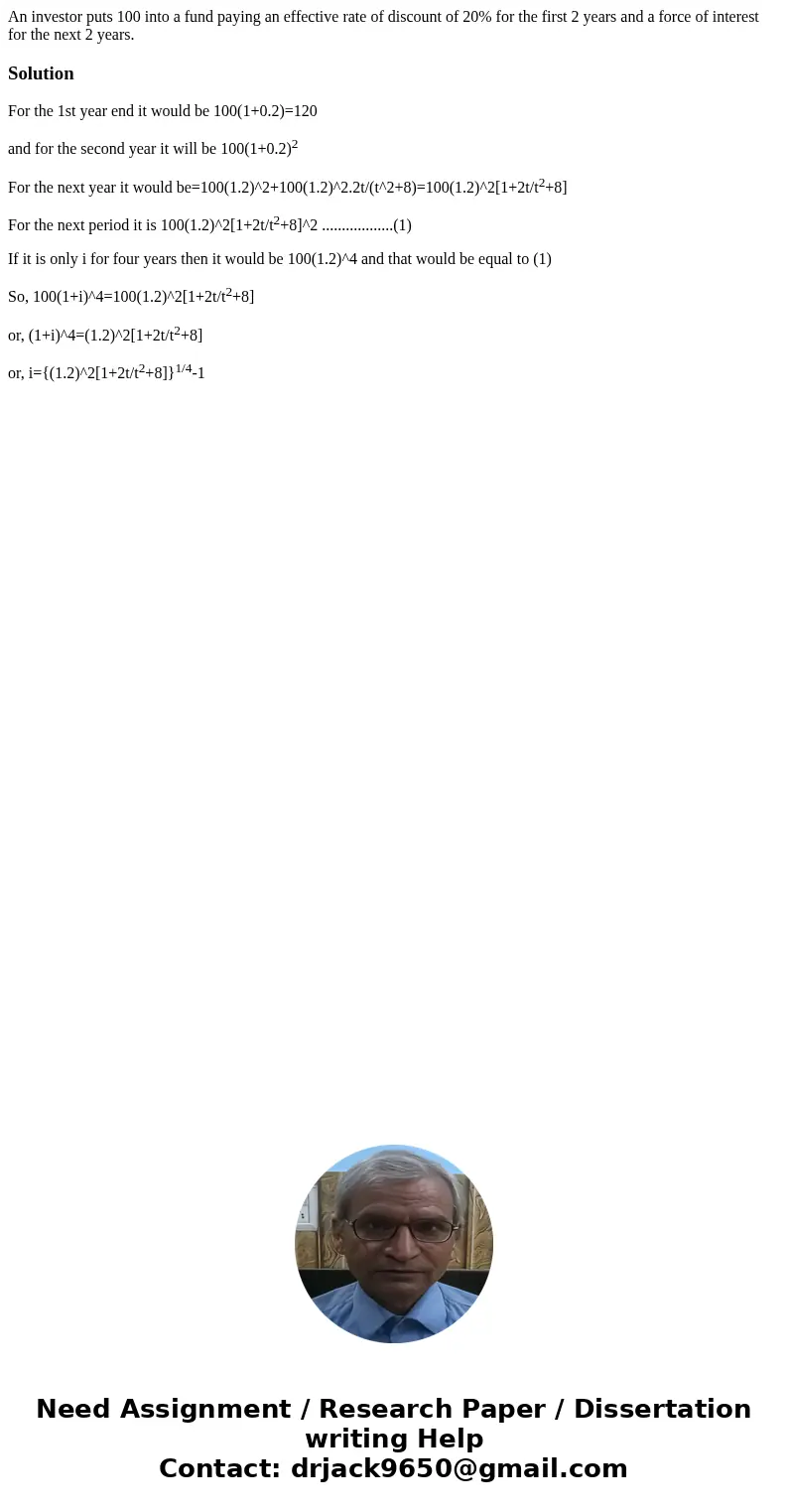An investor puts 100 into a fund paying an effective rate of
An investor puts 100 into a fund paying an effective rate of discount of 20% for the first 2 years and a force of interest for the next 2 years. 
Solution
For the 1st year end it would be 100(1+0.2)=120
and for the second year it will be 100(1+0.2)2
For the next year it would be=100(1.2)^2+100(1.2)^2.2t/(t^2+8)=100(1.2)^2[1+2t/t2+8]
For the next period it is 100(1.2)^2[1+2t/t2+8]^2 ..................(1)
If it is only i for four years then it would be 100(1.2)^4 and that would be equal to (1)
So, 100(1+i)^4=100(1.2)^2[1+2t/t2+8]
or, (1+i)^4=(1.2)^2[1+2t/t2+8]
or, i={(1.2)^2[1+2t/t2+8]}1/4-1

 Homework Sourse
Homework Sourse